Link-Building for SaaS: The Ultimate Guide for 2025

Natalia Toth
SaaS companies spend large sums on marketing and sales, often reinvesting half of their revenue just to stay in the game. Quality backlinks help boost visibility in search results, but they come with a hefty price tag.
Just think of it: every fourth in-house marketer spends between $10,000 and $25,000 on link-building per month, according to Aira.
But you don’t have to be one of them!
In this guide, we're talking about 13 best SaaS link-building tactics that don't burden your budget, backed by real-world examples from savvy SaaS businesses.
Plus, you’ll see what 7 common link-building traps you should beware of, explained by SEO experts.
Before you start building links to your SaaS: 2 tips
Link-building can go much smoother if you lay the right foundations.
Let's see what practices boost your chances to succeed.
1. Publish reports, templates, and examples
SaaS readers love blog posts them give them real-world examples. See this Copyfolio article that demonstrates authentic copywriters’ portfolios. The post has secured 76 organic backlinks from 59 domains, including one from none other than Hubspot.

Investing in market research pays off quickly, too. For instance, this Dashly’s article on 36 chatbot statistics for 2024, which summarizes the findings from their client statistics, gathered backlinks from 62 referring domains within seven months.
Another outstanding example is by Tidio, an AI customer service platform. They published a post on how to write apology letters to customers and illustrated it with 7 real, ready-to-use letter examples.
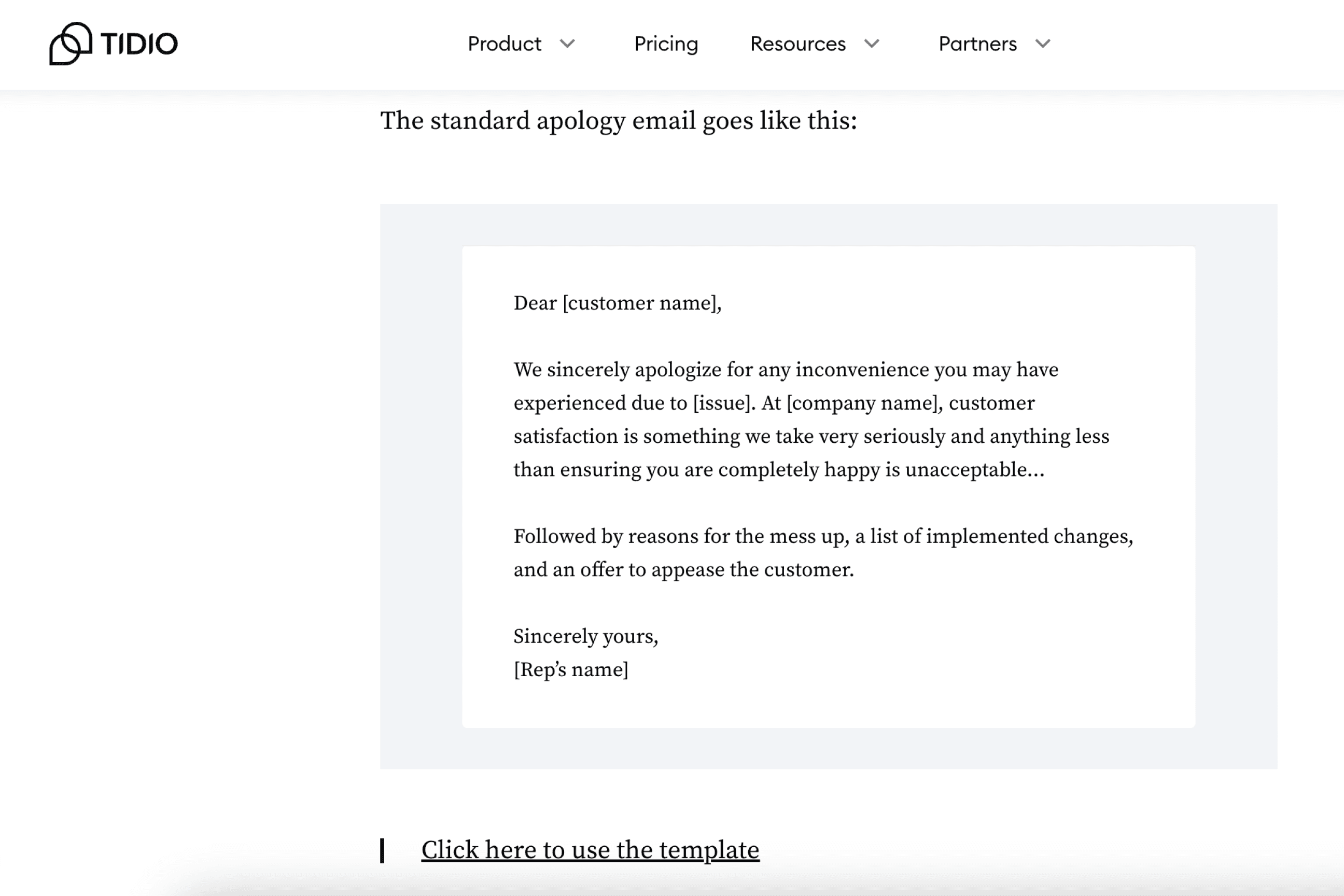
Within just 5 months from the publication date, the article collected backlinks from 78 domains.
Read more: Link building for SaaS: 10 SaaS Sites That It Right
To sum it up, here are the types of content that work as real link magnets for SaaS companies:
- Product comparisons
- Glossaries
- Industry reports and studies
- Infographics
- Articles with examples from the real world
2. Keep an eye on competitors (reasonably)
Competitive research is crucial not just for SEO, but for your overall marketing strategy.
By doing a regular check on your competitors' activities and their outcomes, you can ensure that you don't fall behind, refine your approach, and learn from others' mistakes.
“You have to pay attention to what your competition is doing. If you've built a ton of backlinks and someone's still outranking you, you must dig deeper.
What kind of content do they have? What backlinks do they have? Are they getting more relevant links than you? Sometimes quality beats quantity – a few strong, relevant links can outperform dozens of weaker ones. And remember, traffic pages can be powerful link sources. They often have more impact than links on older, less-visited pages.”
Simon Toroyan, Lead Innovator at Semlead
Now, a tricky question: shall you try and get a backlink from a competitor?
The short answer is: yes, you should. But with a caveat.
“Backlinks from competitors are incredibly valuable. Think of it like doubling the power of your existing links. Since your competitors target the same audience as you, their backlinks hold significant relevance and authority in your niche. Even reciprocal links with competitors can be beneficial, as it creates a mutually beneficial situation where both websites gain exposure and authority in the shared target market.
However, be cautious when giving out links to competitors. Always evaluate the potential impact before linking to them. You will have competing articles, carefully consider whether giving them a backlink outweighs the potential benefit for them.”
Simon Toroyan, Lead Innovator at Semlead
Now, let's see some of the best, often neglected link-building methods for SaaS businesses that bring awesome results.
13 Best Link-Building Tactics for SaaS

1. Foster long-term partnerships in your niche
Partners are businesses that cater to a similar target audience, but instead of competing, they complement your product offering with either technology, services, or distribution channels.
Partnering with other companies is not merely useful for your link-building efforts but can be the driving force in your overall Go-to-Market strategy. SEO pros to whom we talked all agree: partnering up with other businesses in the niche pays off tremendously.
“Building connections takes effort, but it's worth it for long-term link-building success. I search for people interested in my niche through platforms like LinkedIn and Product Hunt.
For example, whenever we launched our platform on Product Hunt, I would reach out to marketing and growth professionals who upvoted us. I'd connect with them on LinkedIn, starting conversations about their work and offering valuable insights to build rapport. This approach has led to high-quality backlinks and collaborations that continue today.”
Alishba Memon, Senior Content Writer and Content Team Leader
“Building relationships is crucial, especially for startups. Many high-authority sites have standards and won't link to sites with low domain authority or traffic.
However, when you've established good relationships with people in the industry, they're more likely to give you a chance, even if your website is just starting. It's like having a mentor or a helping hand that gets the ball rolling when you're starting from scratch.”
Simon Toroyan, Lead Innovator at Semlead
The common types of partnerships in SaaS are technology alliances, channel partners (distributors, resellers, and solution integrators), and membership in an industry association or a niche NGO.
In terms of marketing, partnerships help your SaaS with:
- Boosting brand awareness and generating leads - because you tap into your partners’ existing customer base
- Enhancing credibility - because partnering with well-known companies in your niche strengthens your brand image and increases customer trust
There are many ways to secure backlinks from your partner organizations. Here are some of them:
- Get mentioned in their partner directory
MACH Alliance provides backlinks to each of their 100+ ecosystem members - composable commerce vendors and solution integrators - in their partner directory.
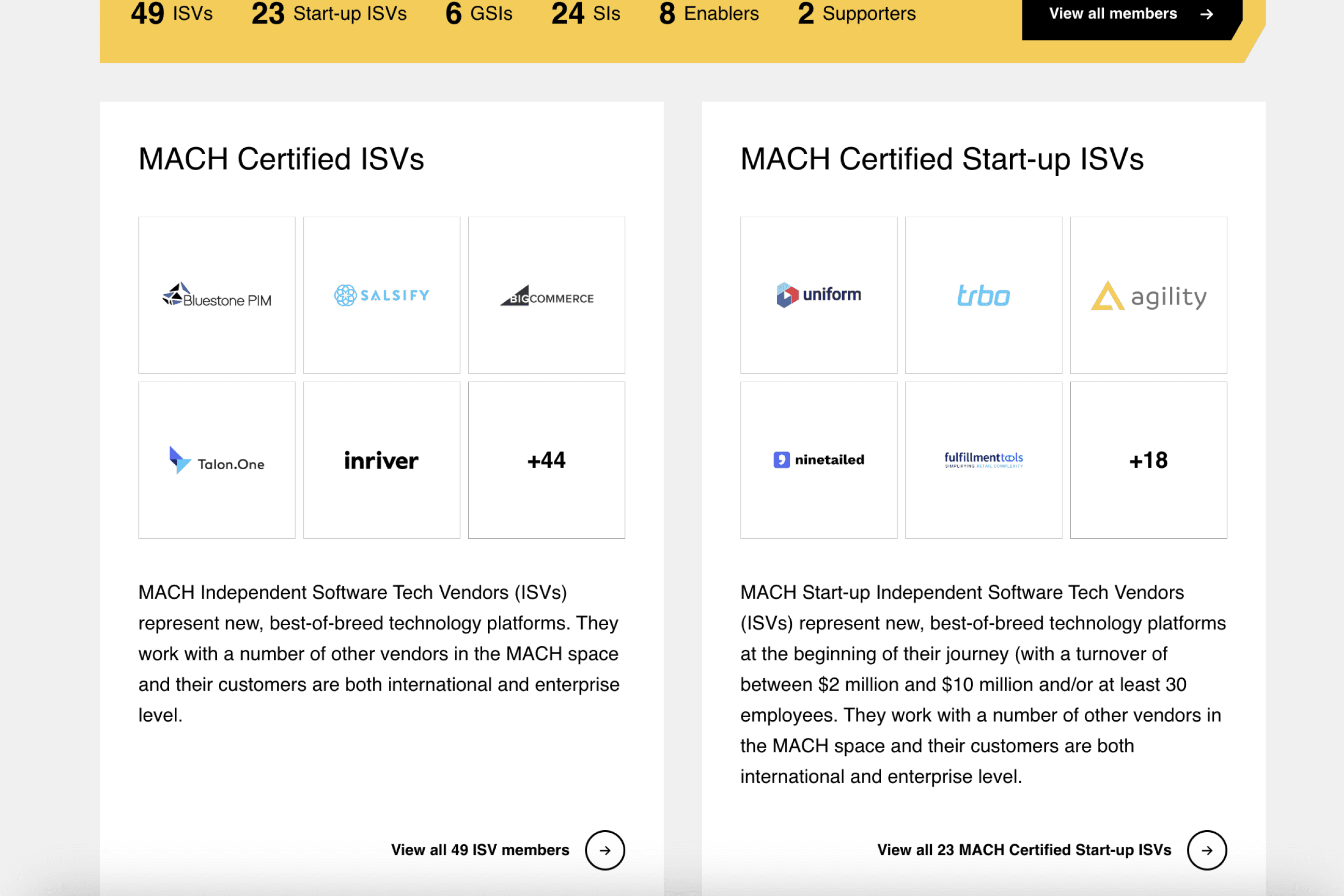
Equipped with a link from a trusted organization with a Domain Rating of 66 and with qualified, high-intent traffic, MACH Alliance members get more visibility with potential customers.
- Host a joined webinar or a fireside chat
Aside from backlinks and lead generation, speaking at a webinar provides you with enough content to repurpose on your blog and social media for months to come.
- Engage as a speaker at an industry event
This will give you not more than a temporary backlink in the Speaker section on the event’s homepage. Industry events are usually covered by industry journals, so you might also get in the limelight of the media - and Google’s Lead Documentation just confirmed how powerful backlinks from news sites are.
- Contribute to your partner’s content creation process
Submit a quote, infographics, or a thought leadership piece for a partner’s blog post. Work together on an industry report, a case study with your mutual customer, or a product comparison article. This is an amazing opportunity to leverage your partner’s site traffic to stand out as a powerful addition to their tech stack.
For example, this article on Contentful’s blog, submitted by a Solutions Architect at their partner agency, Wunderman Thompson, explains how brands can adopt a composable approach.
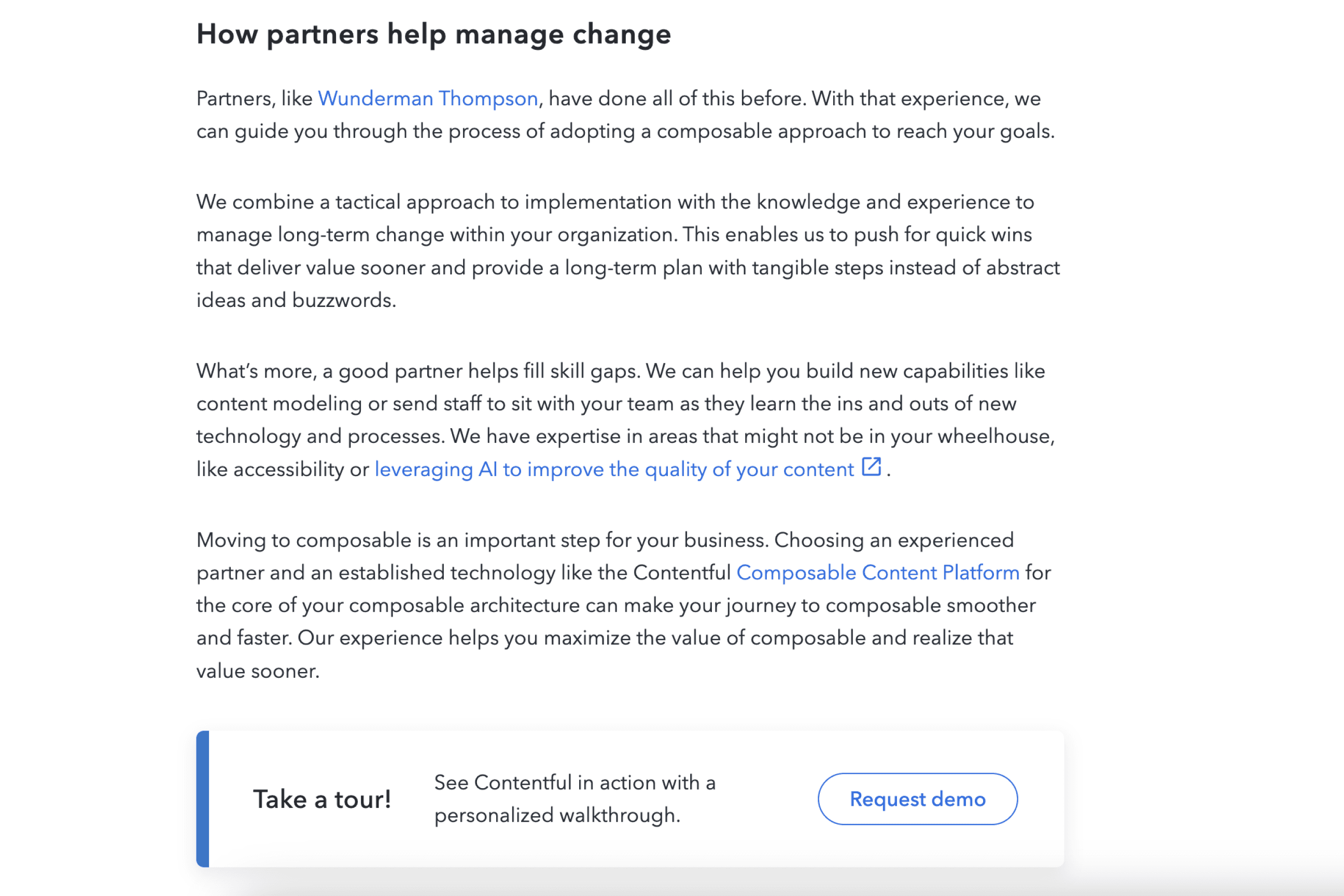
2. Connect with genuine SEOs
Networking with other SEOs gets you far. You can not just build backlinks more easily, but foster a long-term business relationship.
To exchange backlinks with credible sites, give Ranking Raccoon a try. With its manual moderation and zero spam tolerance, it curates the perfect atmosphere for nurturing lasting collaborations with other trusted marketers.
Here’s what expects you on Ranking Raccoon:
- Vetted sites only – Every site in the platform is manually reviewed to ensure quality. We filter out any shady PBNs, spammy directories, or sites with low content quality.
- Authoritative sites - On Ranking Raccoon, you’ll find sites of SaaS market leaders and emerging tools alike: email marketing platforms, employee management platforms, video creation and graphic design tools, payment plugins, chatbot widgets, and much more. Around 40% of SaaS sites on Ranking Raccoon are in the DR range of 70-85, with another 40% in the DR range of 50-70.
- Finding ideal backlink placements in seconds - Our AI recommends the top matches for your site. Plus, you can search for any site’s pages by your target keywords and find perfect pages for your link in seconds.
- Direct messaging instead of cold outreach – Ditch the tedious prospecting and endless email threads! There’s no guesswork on Ranking Raccoon - you see right away who manages a site and can request a link in one click.
3. Show up on product launch sites & directories
If you have a tight budget but a bit of time, submitting your SaaS product to a product listing website has big potential. These platforms put you in front of your target audience, often for free.
The most popular platform that startups leverage to boost brand awareness and attract leads is probably Product Hunt. Product Hunt boasts a monthly audience of 3.7M visitors and a Domain Authority of 91, making it a perfect place to place a backlink to your product and drive qualified leads and collaborations.
This is what a product page on Product Hunt looks like:

Here are 10+ more platforms where you can make your product visible:
- AppSumo
- AlternativeTo
- AppRater
- Betalist
- CrowdReviews
- F6S
- Launched!
- SaaSHub
- StartupBase
- StartupStash
- LaunchingNext
- Webwiki
Even more importantly, these platforms boast strong, active communities. By staying active, supporting other products, and contributing thoughtful comments to discussions, you can quickly expand your professional network and foster marketing and product collaborations.
Imagine you are writing an article for your blog and looking for real-world input to make it stronger. You can start a discussion on Product Hunt, reach out to members with the most appealing contributions on LinkedIn, and ask if you could incorporate their quotes into your blog post.
It’s a double win: you make your content piece stronger by citing real people’s experiences and get an opportunity for additional post promotion by the quote contributor.
4. Publish a free online tool
If your development resources allow, investing in a unique tool that can be widely used in your niche is a great way to secure links organically.
“Finding creative ways to develop natural backlinks is essential for any SEO strategy. I have found that investing in free-to-use tools your audience finds real value in, like calculators that solve complex problems, is a great way to develop your brand and earn links.”
Dustin Slightham, Sr. Director at PrimePay.com
This is exactly what PrimePay did: they developed a Bonus Tax Calculator which determines the amount of withholding on bonuses and other special wage payouts.
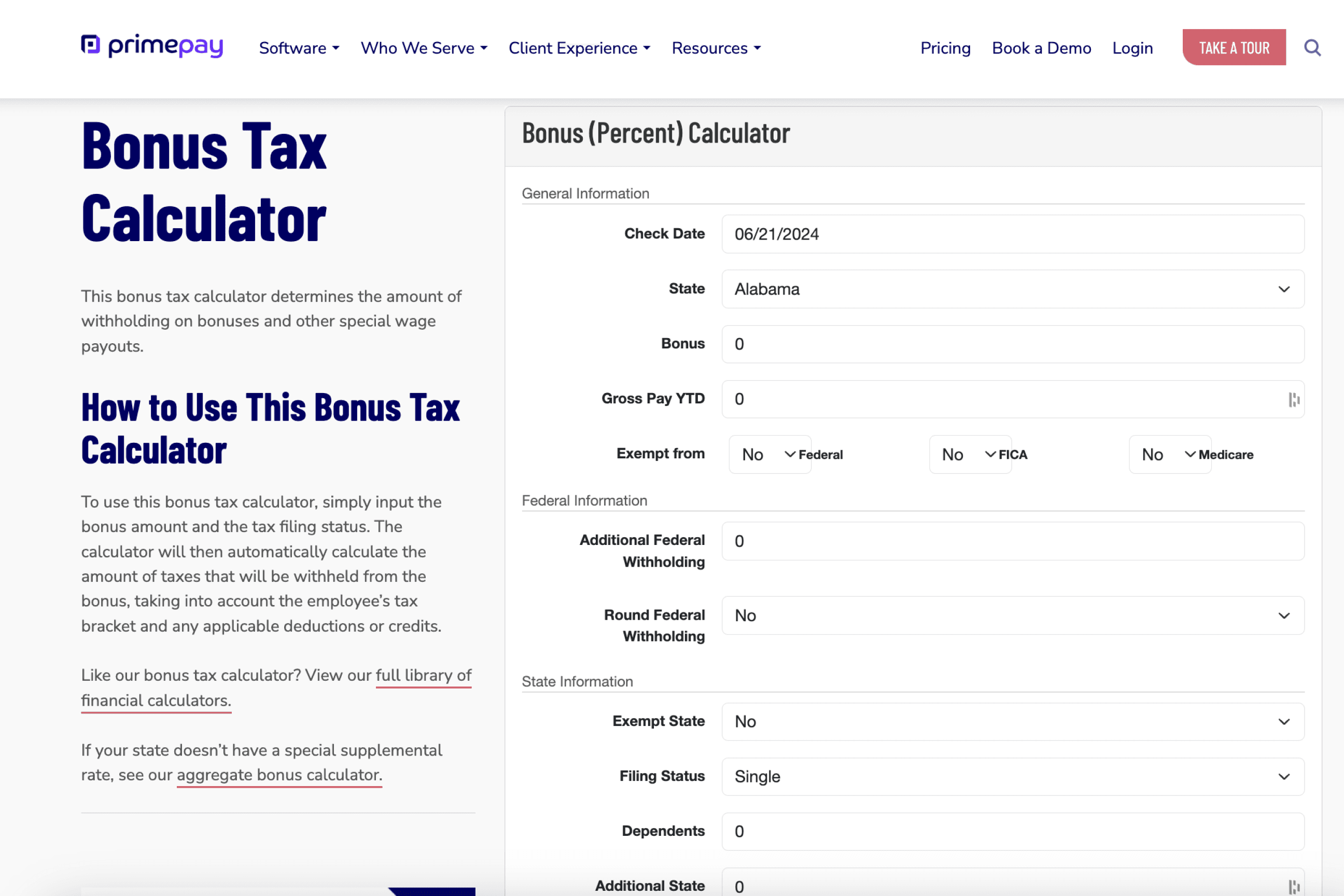
Within one year, the tool secured 100 backlinks from twelve referring domains in the Fintech industry, and an explosion in organic traffic followed. Today, it’s PrimePay’s best-performing page in terms of organic traffic.
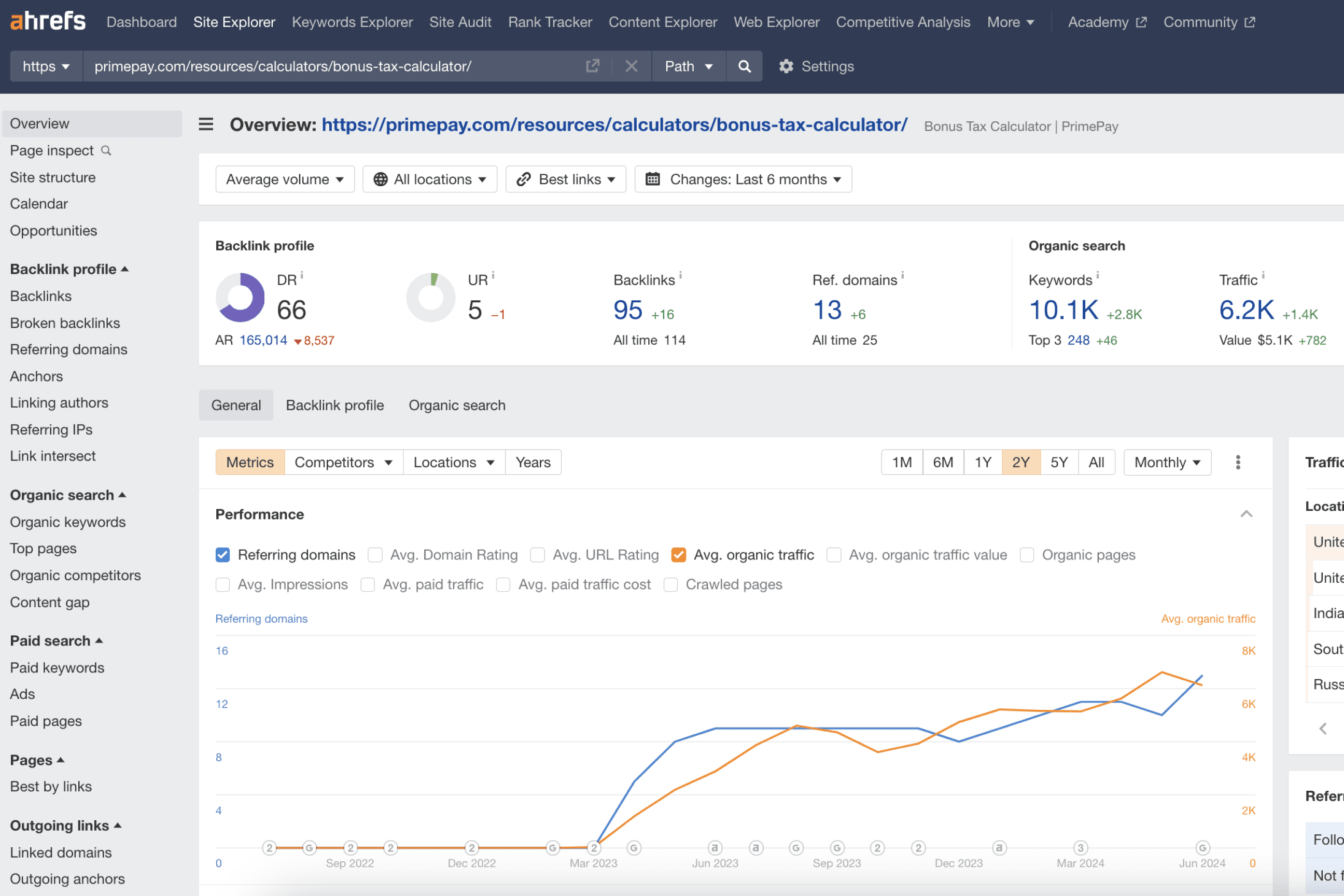
Another great example is the Sales Commission Calculator by Reply. It allows you to calculate salespeople’s commissions for different scenarios.
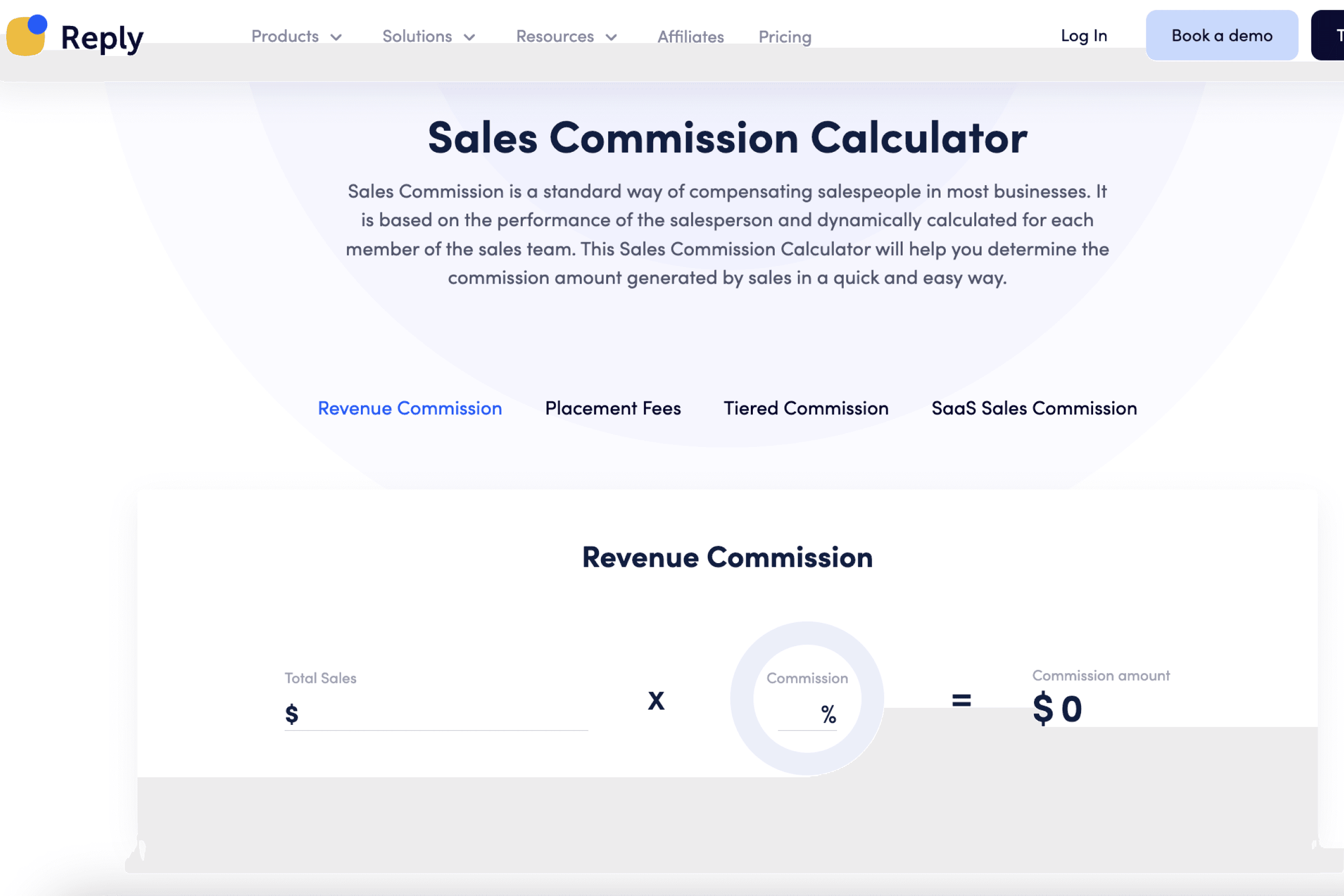
Within a year, the calculator attracted 71 backlinks from 50 referring domains.
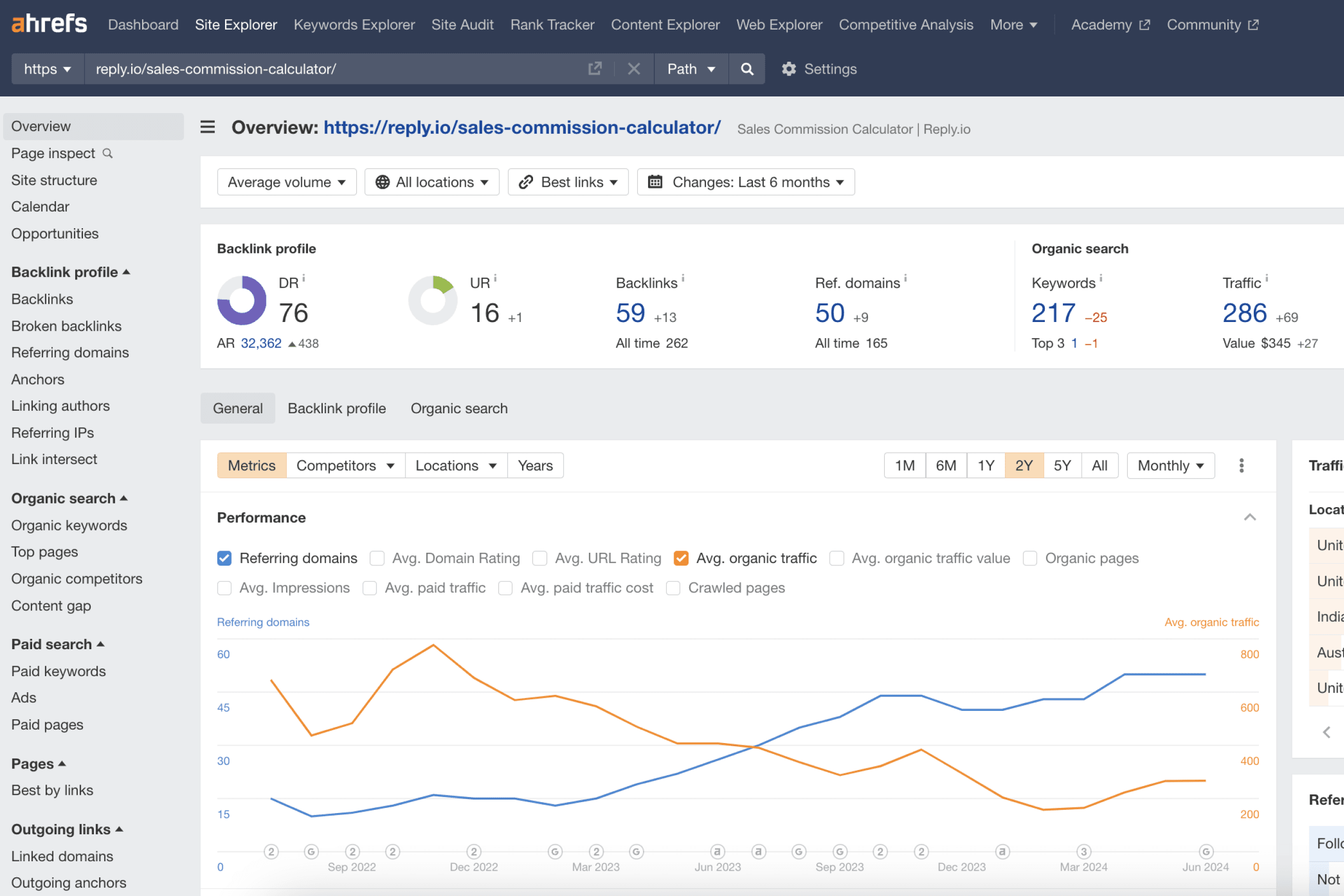
5. Involve Management in Passive PR
Digital PR, or public relations, can be a powerful tool for link-building.
I’m seeing an increasing number of SaaS companies (finally) turning to digital PR as a way to earn authoritative editorial links, in particular, using data studies to create interesting and relevant stories that journalists want to write about, and link to.
Especially as a SaaS startup, there’s a temptation to want everything to be about the platform, but brands are starting to realise that there’s only a handful of journalists who want to write about new products and their people. There are only a few TechCrunch’s out there.
Stepping away from ‘brand PR’ for a moment lets you see the bigger picture, realising that journalists want engaging stories, not product pitches. And this can be leveraged to earn links and increase awareness.
Create a data study that’s related to the audience, pitch it to relevant journalists and earn links that money could never buy!
James Brockbank, Managing Director & Founder of Digitaloft
Here are some decent freemium platforms for finding digital PR opportunities:
- Featured
- Sourcebottle
- Qwoted
- PitchRate
- Terkel
- SourceBottle
6. Get featured on podcasts
Joining the podcast can raise your brand awareness (and your personal brand) tremendously, build up trust, and create a personal connection with your audience. Plus, you might get a few powerful backlinks, too.
Going to a podcast as a guest requires some research on your side. Still, many SEO thought leaders cite this as a low-hanging fruit.
Before you invest in speaking on a podcast:
- Ask your target audience if they listen to any podcasts. If yes, what are those?
- Think of a story you can tell to a specific podcast audience
- Pitch your participation to relevant podcasts, coming up with a topic that brings together your marketing goals.
For example, the Better Done Than Perfect podcast by Userlist invites guest speakers from the SaaS world to share insights on all things related to SaaS businesses.
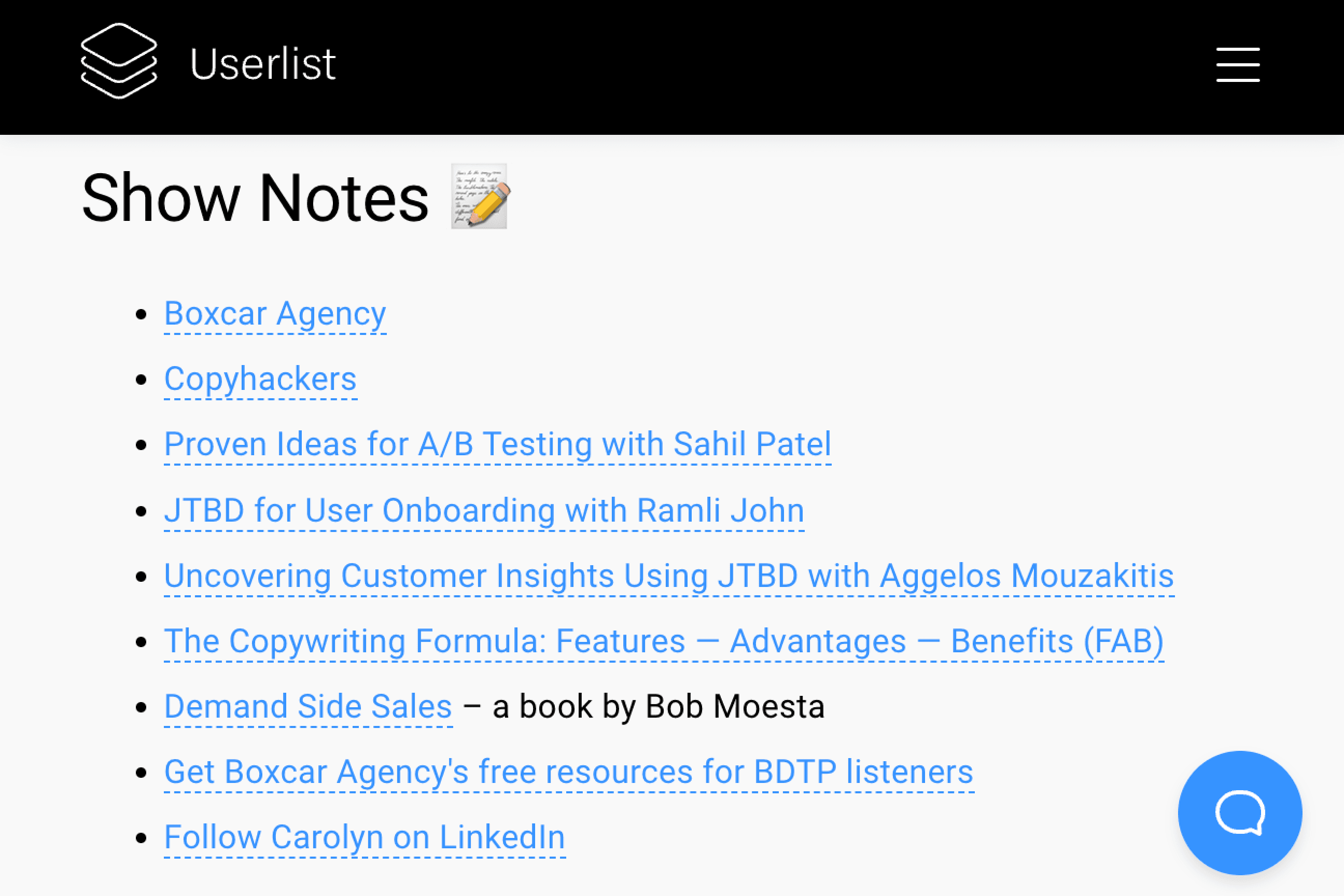
Here are a few more podcasts that feature SaaS founders:
- How I Built This Podcast with Guy Raz
- Founder Chats by baremetrics
- Masters of Scale with Reid Hoffman
- SaaSclub.io
- SaaS Marketing Superstars with Aaron Zakowski
- SaaStr podcasts
- Latka podcast
- The SaaS Revolution Show
- Product Stories Podcast by trustshoring
7. Try image-based link-building
Infographics are engagement magnets! According to Truelist, people are three times more likely to share and like infographics compared with other types of content.
Develop high-quality infographics, charts, and other visuals related to your industry. Share them on social media and encourage others to embed them with proper attribution.
That’s exactly how Act! got a backlink to their ‘Best CRM for small business’ blog post from engagebay’s article.
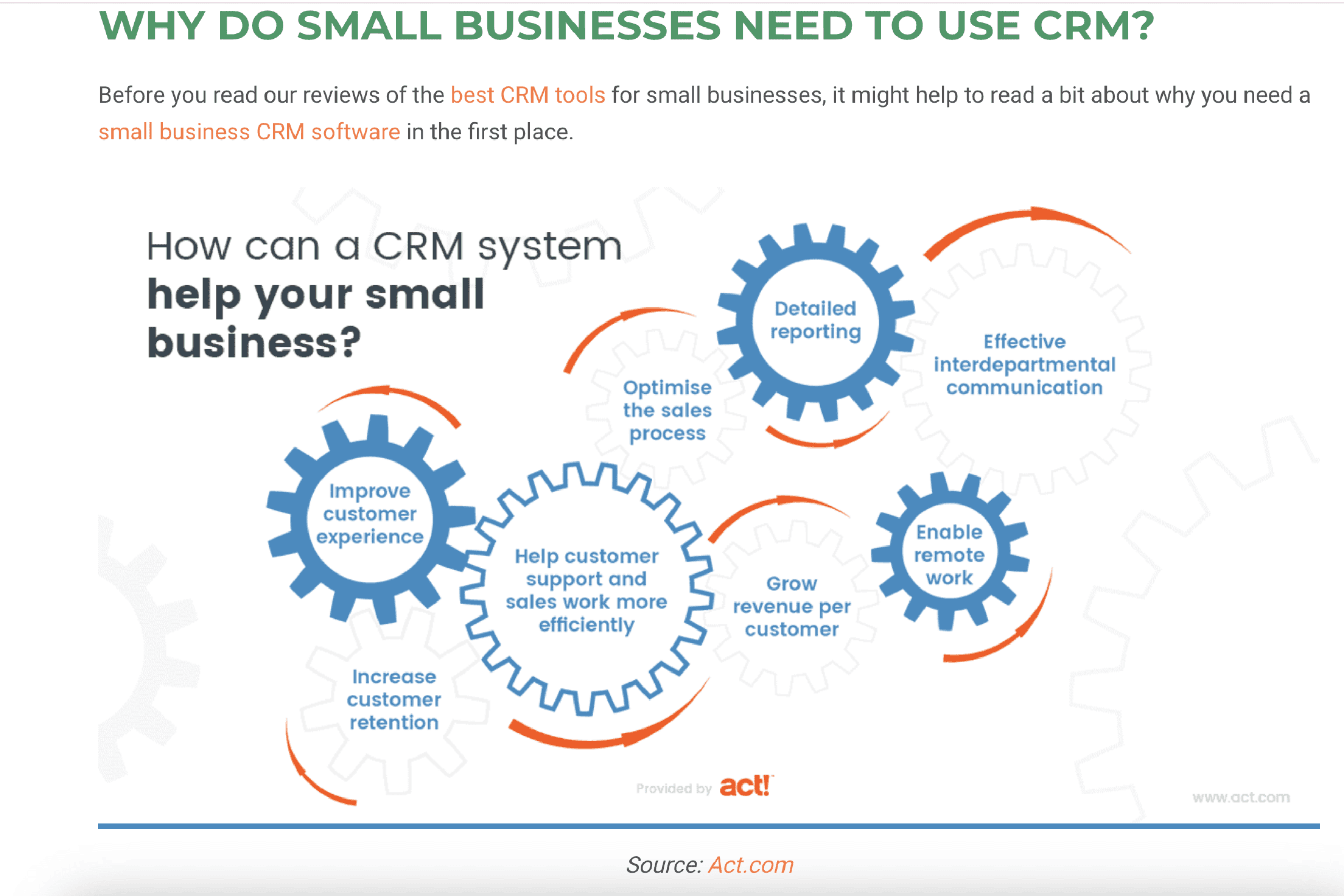
8. Collaborate with influencers
89% of marketers believe that investment in influencer marketing generates a higher ROI than other channels, and that’s for a reason.
According to Tomoson’s study, businesses earn an average of $6.50 for every $1 invested in influencer marketing - that applies to SaaS companies, too.
For specialized SaaS products, especially if you’re in the startup phase, the best approach is to start with nanoinfluencers - people that have 1,000- 4,999 followers.
Why? Despite having a smaller audience, nano-influencers often foster deep engagement and trust with their followers. This allows brands to connect with specific target demographics that may be difficult to reach through traditional marketing channels.
If your target audience spends time on Instagram, TikTok, or YouTube Shorts, collaborate with influencers to create content that mentions your product on these platforms.
To find influencers in your niche, you can use a tool like influData, InfluencerMarketing.ai, or HypeAuditor.
And if you're in B2B, the good old LinkedIn is the place to go.
9. Search for unlinked brand mentions
Unlinked brand mentions mean that your product was mentioned on an external page but without linking to your site. Reaching out to the site’s content team and asking to put a link is a low-hanging fruit.

To get notified when your brand name appears on the internet, you can set up a Google Search alert. Alternatively, you can use a tool like Mention, Brand24, or BrandMentions.
Note: this method works best for brands that are already known by the market. So, it's worth investing in your brand awareness in the first place!
10. Set up FAQ pages
A comprehnsive FAQ section that addresses common pain points and questions from your target audience can enhance your ranking for relevant keywords.
Other websites in your niche might find your FAQ valuable and link to it naturally as a resource for their readers. Finally, FAQ pages are excellent for internal link building. By linking to your FAQ section from other pages, you distribute link equity and enhance overall site authority.
But how do you know what your target audience is looking for online?
One great way to find out is by using Ubersuggest, the free keyword research tool by NP Digital.
Let’s say your product automates customer service tasks. First, add a keyword and set the language and the country where your target customers are.
Then, hit ‘Search’ and navigate to Keyword Research -> Keyword Visualization.
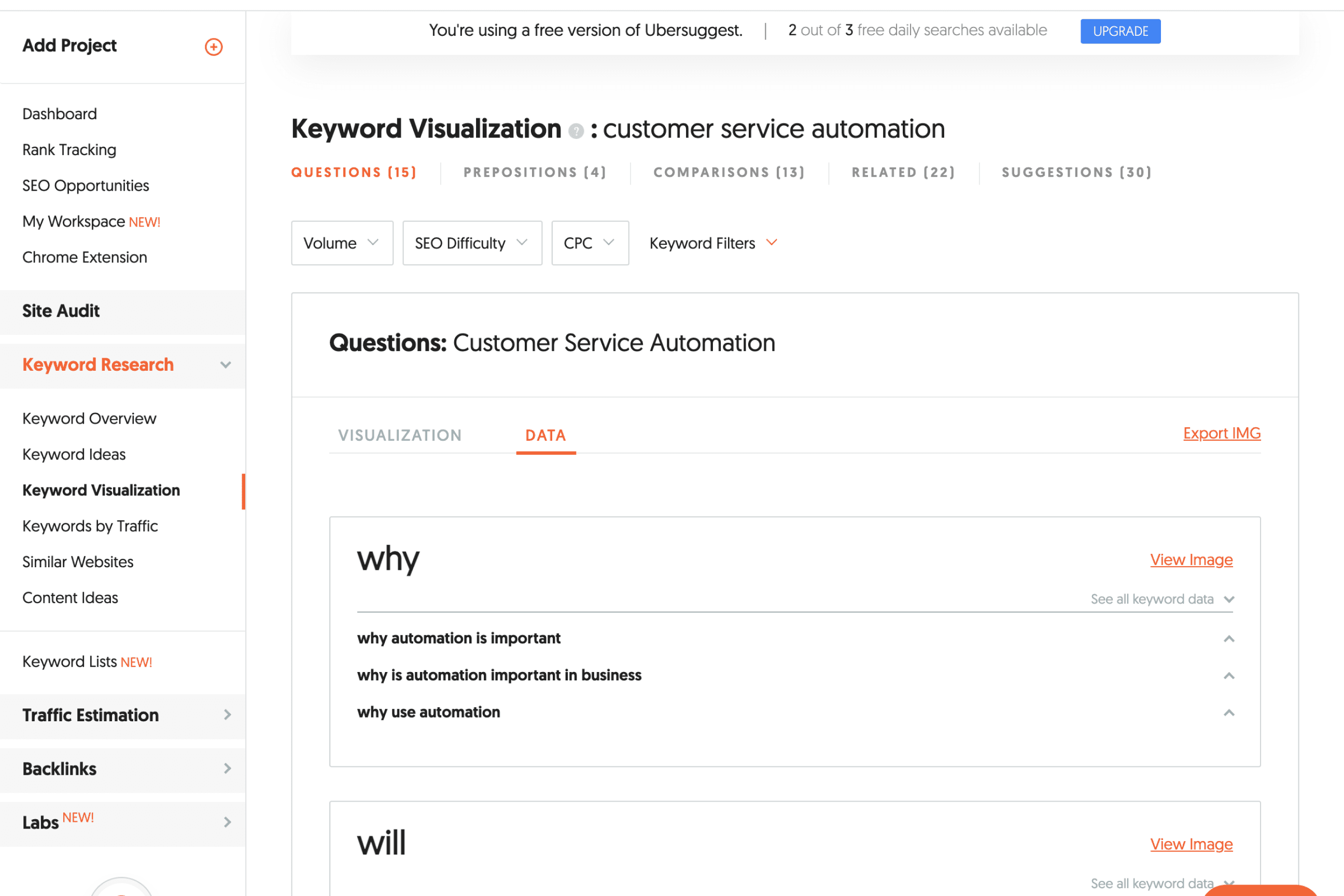
Here, you’ll see the most common search queries related to your target keyword. You can expand each keyword and see the search volume and SEO difficulty. Pick the questions that are most relevant to your product and answer them in the FAQ section.
11. Publish Resource Pages
Resource pages, or "recommended tools" pages, are a curated collection of valuable information a brand wants to share with its audience. They are like a well-organized toolkit or a go-to guide filled with helpful resources, tools, apps, products, services, and interesting articles or websites.
"Resource pages have been exceptionally powerful in my experience, offering high-value backlinks from authoritative sites. Clients have seen significant traffic boosts as these pages naturally attract educational and reference links, which in turn enhances the overall SEO performance."
Rishabh Jain, SEO Specialist
Resource pages are a magnet for backlinks - if you create them strategically.
‘If I write a guest blog post for a partner company, I'll also create a shorter resource page on a related topic on our own site. This gives us two chances to attract backlinks – the guest post itself plus our own dedicated resource.
Sometimes, other websites won't add a link to the guest post if they already have too many links in that article. That's where our second resource comes in handy! I can offer them the shorter version as an alternative, increasing the chances of getting that valuable backlink. It's a win-win: we help them out, and we get more eyes on our content.’
Alishba Memon, Senior Content Writer / Content Team Leader
12. Write Comparisons
Develop data-backed comparison pages that objectively compare your SaaS product to main competitors.
When you just begin, it’s considered good practice to list your most popular competitor first and mention your product as a second or third alternative.
And as you see your rankings for the specific keyword go up, you may get bolder and showcase your product in the first place.
For example, Zendesk’s article on the best CRM software for small businesses is the champion among competitors for backlinks built.
Boasting an in-depth analysis of fifteen alternative platforms, an FAQ section, and owned infographics, Zendesk’s blog post secured 441 backlinks from 53 referring domains. A solid portion of backlinks came within only three months from publication.
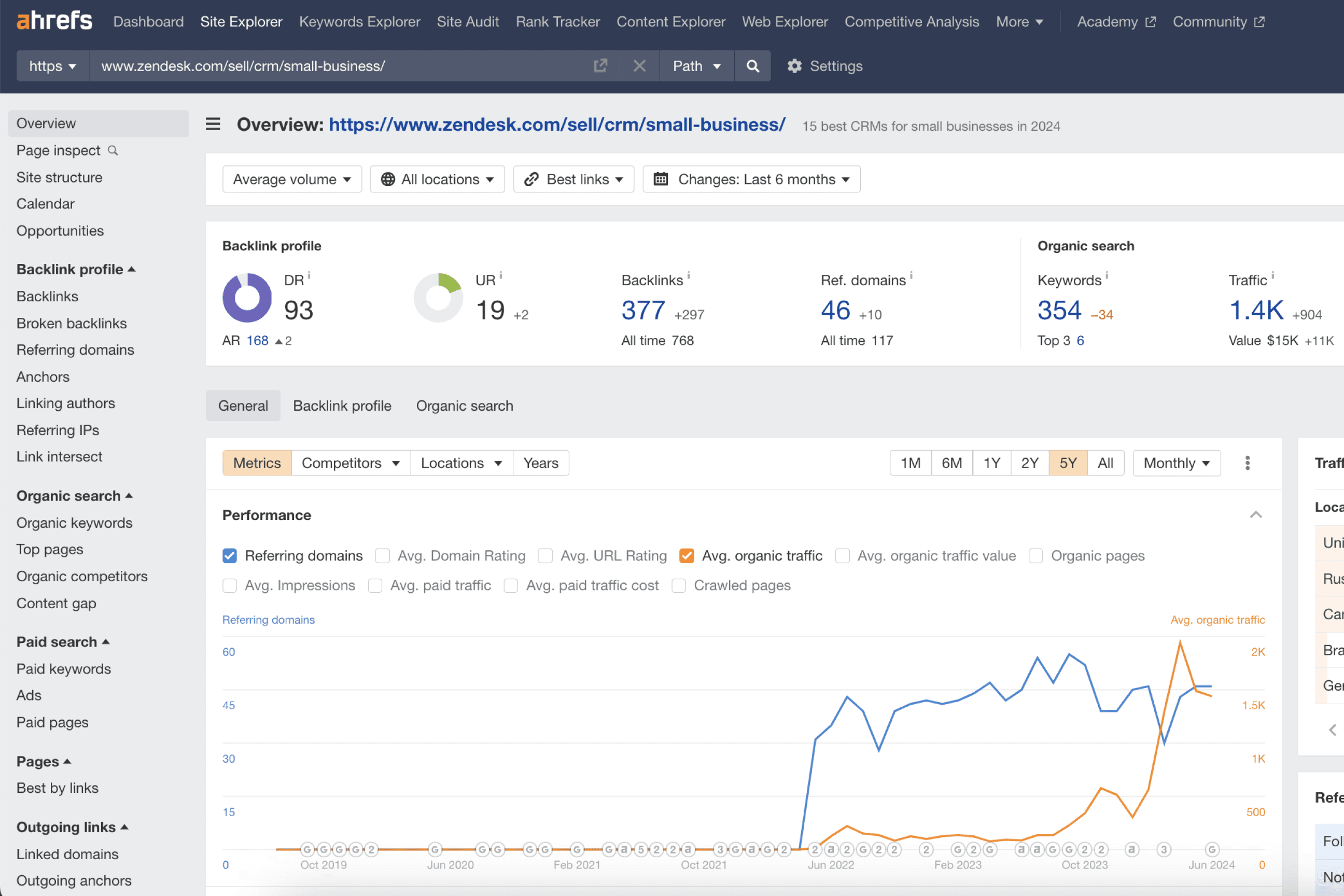
13. Submit guest blog posts (smartly!)
Guests posting as a link-building tactic has been here for ages, but it works slightly differently for SaaS.
A trending strategy is when founders start by contributing informative, thought leadership guest posts to relevant sites in their niche. This is a great way to gain exposure and backlinks.
“One strategy that is popular lately with startups is guest posting. Many founders even start guest posting on relevant sites before their own blog is live. Once their blog is launched, they ask for backlinks from those 30-40 sites they contributed to. It's a smart way to quickly boost your DA and get noticed by bigger players.”
Daria Gogoleva, Growth Strategist at Audiense and Tweetbinder
You need to be strategic about placement. The Google Docs Leak of 2024 confirmed that only backlinks that generate clicks have an impact on your rankings. Writing an outstanding blog post requires effort, and you want to invest it in a piece that will awaken your target audience’s interest and motivate them to learn more by going to your site.
Here are a few search operators to find guest posting opportunities:
- ‘write for us + {niche}’
- {keyword} intitle:”write for us”
- {keyword} intitle:”write for me”
- {keyword} intitle:”contribute to”
- {keyword} intitle:”submit” + inurl:blog
- {keyword} “submit a guest post”
- {keyword} “accepting guest posts”
- {keyword} “guest author”
- {keyword} “become a contributor”
- inpostauthor:guest {keyword}
Is there something I should avoid?
If done wrong, backlinks can kill your credibility.
Here are some common link-building mistakes that you’d rather not make.
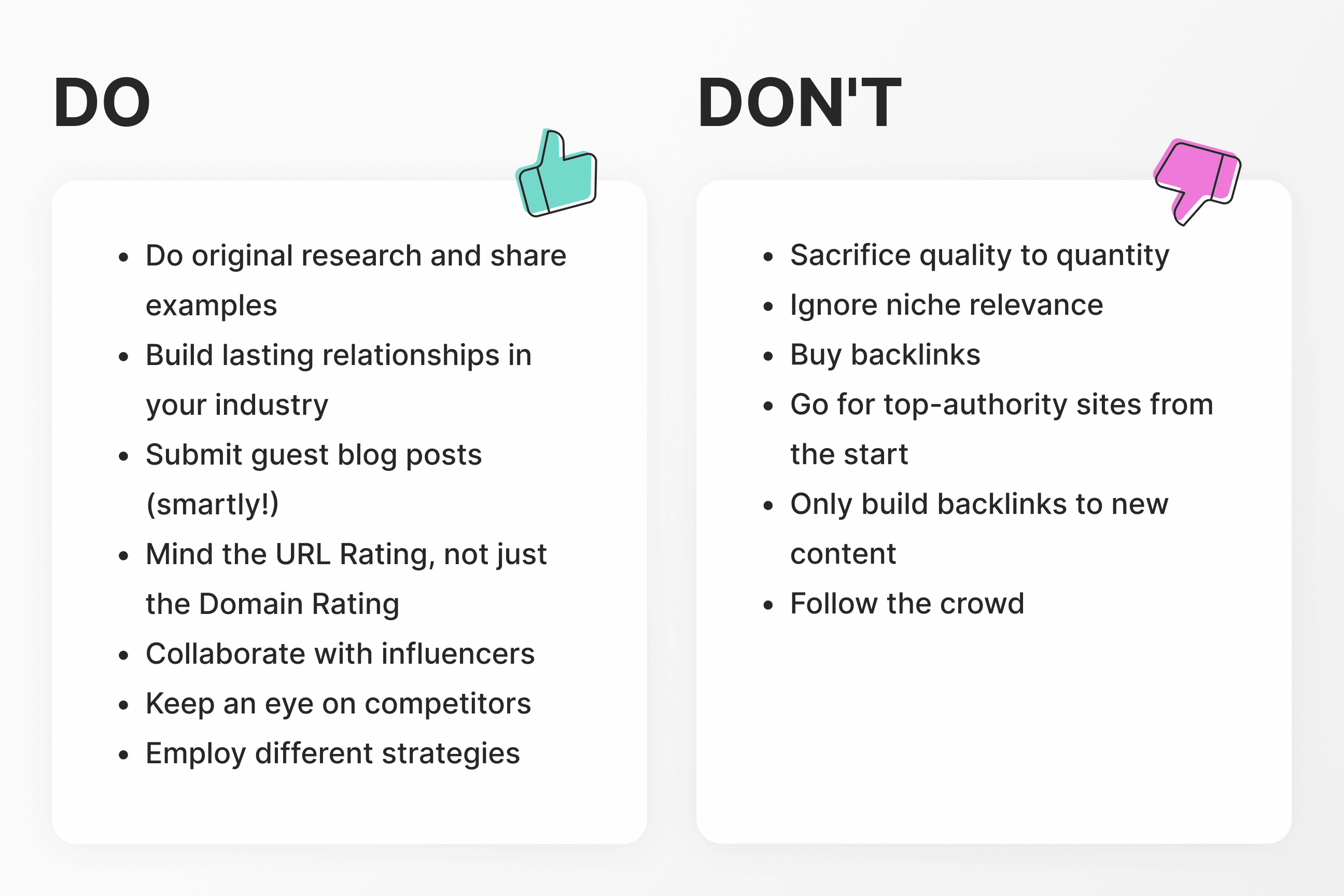
1. Don't sacrifice quality to quantity
This one is a no-brainer. Prioritize high-quality backlinks from relevant websites over a large number of low-quality backlinks. You’re better off getting one strong backlink per week than a hundred irrelevant ones in a day.
As Google’s Gary Illyes just confirmed:
“Google is really, REALLY good at ignoring links that are irrelevant to the site they’re pointing at.”
This leads us to the next “don’t’” practice.
2. Don't disregard niche relevance
The best backlinks come from sites relevant to your industry, because they help you attract targeted traffic.
Stay away from sites in shady niches like CBD, marijuana, adult content, casinos, and cryptocurrencies. These industries tend to have a higher number of manipulative and low-quality websites that Google doesn't favor. Getting links from these sites can harm your site’s reputation and credibility.
A backlink from a site that has no clear topical focus will be nearly useless:
“Steer clear of general websites that cover a wide range of topics, especially if they're not well-known news outlets. These websites often lack authority and relevance, making their links less valuable for your SEO efforts.”
Simon Toroyan, Lead Innovator at Semlead
3. Don't just focus on Domain Rating while ignoring URL Rating
Domain Rating (DR) gives you an overall picture of a website's authority - but you receive a backlink from a specific page. URL Rating (UR) provides a more nuanced view of that page's value for your backlink.
UR helps determine if the specific page's topic and content are relevant to your backlink - so you can be more confident that getting this backlink is worth the effort.
“In 2024, people mostly focus on Domain Rating (DR) as the main metric. But I think URL Rating (UR) matters a lot, too.
Think of it this way: when someone lands on a page, it's like that page is giving a personal recommendation to the links it shares. That's UR in action. So, it's not just about the overall reputation of a website, it's also about the trust we place in the specific page sending us somewhere else. So both DR and UR are important if you want to win at SEO.”
Alishba Memon, Senior Content Writer and Content Team Leader
4. Don't buy backlinks
You already know that you paying for backlinks from spammy or irrelevant websites can earn you a penalty from Google.
But paid backlinks from relevant domains are not recommended either.
“I've sen firsthand how paid backlinks can be a risky gamble. Some providers will remove your link after just a month or a quarter, leaving you with nothing to show for your investment.
You want backlinks that stick around for the long haul, ideally for at least two years. Unfortunately, some paid link services don't deliver on that promise. That's why I'm not a fan of paid link-building – it can be a waste of money if you're not careful.”
Alishba Memon, Senior Content Writer / Content Team Leader
5. Don't chase top-authority sites from the start
As a new product, you want to gain visibility among potential customers as soon as possible.
But approaching high-authority domains for a backlink right from the beginning may be an uphill battle.
These well-established sites often have large teams, making it difficult to pinpoint the right contact person. Even if you do, their inboxes are flooded with new backlink requests every day, and yours might get lost in the noise. Plus, they may be hesitant to link to an emerging site and a product that hasn't yet proven itself in the market.
A way out? Start getting backlinks from smaller sites first - as you build your authority brick by brick, you can aim for more prominent link-building partners.
“When you're just starting, your website's authority is understandably low, and big, established sites don’t want to link to you right away. It's a bit like trying to get into an exclusive club – you need to build up your reputation first.
I've found that it's best to start by getting backlinks from other sites with similar authority. It's a way to get your foot in the door. Later, as your site gains credibility and a higher DR, you can start approaching stronger domains for backlinks.”
Daria Gogoleva, Growth Strategist at Audiense and Tweetbinder
6. Don't just build backlinks to new content
Another common mistake is to neglect backlink building to existing, already well-ranking pages for the sake of newer ones.
Your older content deserves just as much attention as the newer pieces.
Why? Because your competitors are very likely trying to take you over for specific keywords.
“I've learned to never neglect existing content. Even if a blog post is ranking well, the competition never sleeps. While you're busy working on new stuff, competitors are actively building links to outrank you. Keep your guard up: Increase your backlink efforts and conduct ongoing content analysis for necessary updates. Adapt your approach based on the situation; at times, you'll need to blend strategies, whether they involve SEO (technical, on-page, off-page) or design (mainly UX) improvements as needed.
I always keep an eye on what my competitors are doing and make sure I'm not falling behind. If I see them getting more backlinks to a competing page, I know I need to step up my game and get more links too. Otherwise, I risk losing that valuable traffic and all the hard work I put into creating that content would be for nothing.
So, my advice is to prioritize your existing content, especially the high-performing pieces, and don't forget to keep an eye on what your competitors are up to.”
Simon Toroyan, Lead Innovator at Semlead
7. Don't follow the crowd
An always popular link-building tactic is to identify sites that link to your competitors but not you, and then request a link to your own site.
However, that should not be your sole focus.
Don’t fall into the trap of chasing the same links all of your competitors have and nothing else.
Yes, being featured where your competitors are featured makes total sense from a referral-traffic perspective, and you shouldn’t ever discount chasing these, but that shouldn’t be all you’re doing.
Look at where you can land links from that your competitors don’t have, whilst maintaining relevancy. This is where you really gain a competitive advantage, chasing those hard-to-land links.
James Brockbank, Managing Director & Founder of Digitaloft
How fast will backlinks improve my SaaS rankings?
You do everything right, but don’t see immediate results?
Especially if you’re a new SaaS company, you might be wondering how fast backlinks can have a positive influence on your business.
Authority Hacker shares that in 9 out of 10 cases, your link-building efforts start to pay off within 1 to 6 months.
However, some experts that we talked to see the impact much faster.
“I've mostly seen results from good backlinks within one to one and a half months. But there are so many variables at play. Despite building strong links for a page, it's not always guaranteed to improve rankings. Determining whether the issue lies with the link or the content is the fun and challenging part. This is the part where you will differentiate yourself from the competition.”
Simon Toroyan, Lead Innovator at Semlead
Conclusion
If you work for or own a SaaS business and want to stand out from the competition, these frequently overlooked SaaS link-building strategies offer a fresh perspective.
Experiment with these tactics and see what works best for you, but be patient with yourself. Link-building is an ongoing journey, and these strategies are just the beginning of your path to success. We’re rooting for you!
And if you want to secure amazing backlinks for your SaaS site easier than ever, give Ranking Raccoon a try. It's the spam-free link-building where SaaS marketers build free, impactful backlinks without a single cold email and watch their SEO improve. Join us today!

Natalia Toth
Marketing Manager